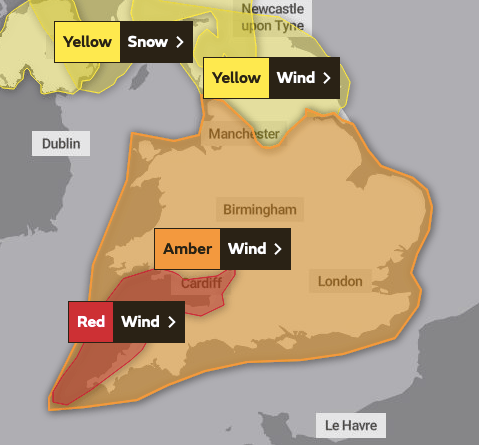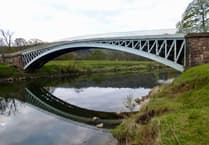Mark Newberry, Commercial Director at Green Flag, commented: “The imminent arrival of Storm Eunice on UK shores will see many parts of the country affected by strong winds of up to 90mph, while some parts of the UK could even see snow. The onset of strong and disruptive winds,coupled with millions travelling over half term, means that Green Flag is expecting a spike in breakdowns across the country.”
“
“As a result of these weather conditions, we urge drivers to remain cautious and to carry out the relevant safety checks before setting off on their journeys. It’s particularly important that people are as prepared as possible to withstand the high expected wind speeds and potential snow in some areas.”
Mark Newberry
Green Flag's top tips for driving in strong winds:
- Plan your journey - You wouldn’t go outside in freezing cold weather without a warm coat, so why head into a storm without first checking for disruption? Go online and plan your route to see if there are likely to be road closures or delays.
- Hold onto your doors - When you’re opening a car door in strong winds, especially from the inside, have a firm grip of the door handle and be prepared for the wind to catch it. High winds can cause serious damage to a door’s hinges.
- Think about where best to park - Try to avoid parking beneath trees or near a building’s roof, as falling debris could damage your car or cause serious injury.
- Grip the steering wheel firmly - Some drivers find it more relaxing with one hand on the steering wheel. This is never a good idea, especially when faced with strong gusts of wind. Grip the wheel firmly with both hands.
- Leave more room - Reduce speeds and increase the distance between you and other traffic, especially if roads are wet. Also, be wary of high-sided vehicles, motorbikes, and cyclists, they are all particularly vulnerable to the effects of the wind.
Stay safe if you breakdown – if you find yourself experiencing a breakdown while travelling on the motorway it’s best to try and turn off the road at the next exit. If this isn’t possible, pull onto the hard shoulder and turn on your hazard warning lights. Exit the car using the doors facing away from passing traffic, wait behind a barrier and move up the bank at the side of the road if you can. Don’t put yourself in danger by attempting to make any repairs yourself, call for help, or call your breakdown provider who will ensure you’re safely back on the road as soon as possible.
“
“Although we're used to bad weather in the UK, it can still be quite a shock when faced with high winds and rain from an incoming storm. In a survey by Confused.com, a quarter (2 per cent) of people said that they have had their properties damaged by wind, and over one in ten (12 per cent) said their properties have been damaged by fallen trees. You never know what risks weather warnings might bring, so it's always best to be prepared.
“There are some routine maintenance chores you can do to reduce storm damage which might help out later. These include clearing gutters at least twice a year and especially after heavy rain, check your roof for any loose tiles or damage and pruning trees to reduce the risk of debris.
“To protect your property in extreme weather conditions, having the right cover is crucial. Check you have buildings and contents insurance, which should cover the property itself and your belongings. That way, if anything gets damaged and you need to make a claim on your home insurance, you'll be covered. If you're confused about what other steps might be necessary, our guide to making a claim for storm damage explains how you can get in touch with your insurer, make an inspection and sort emergency repairs.”
Home Insurance Expert at Confused.com Jessica Willock




